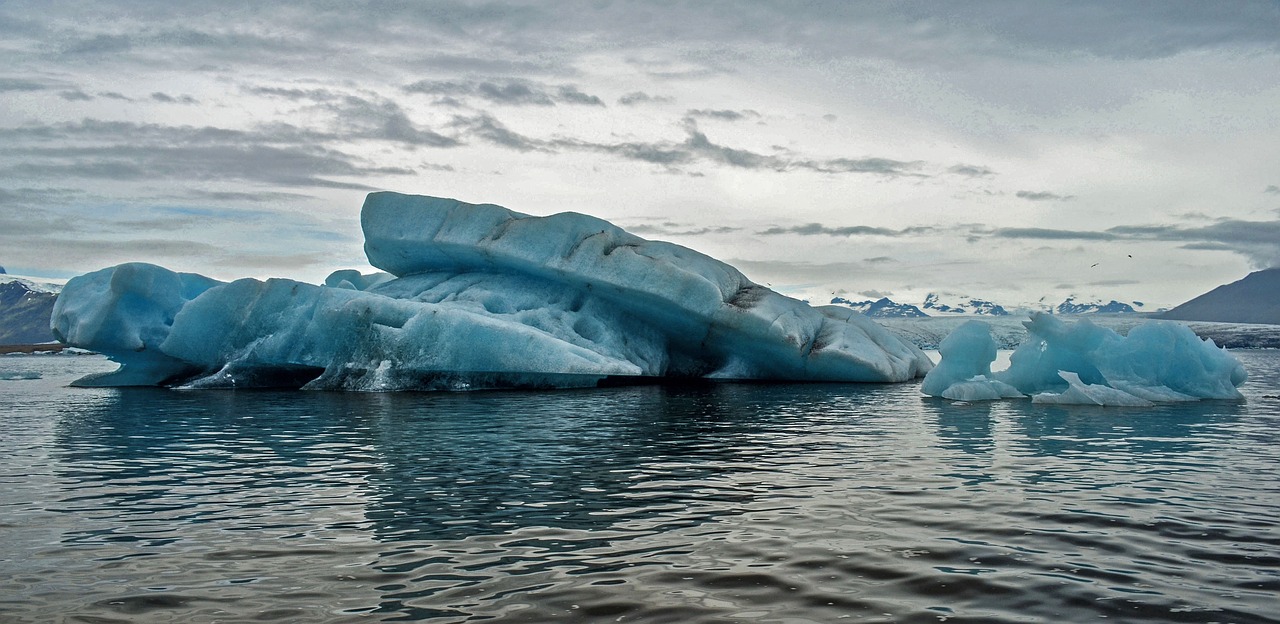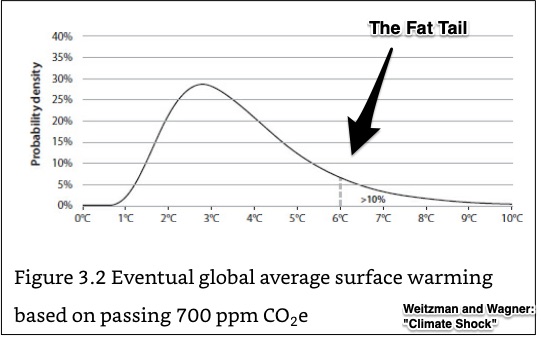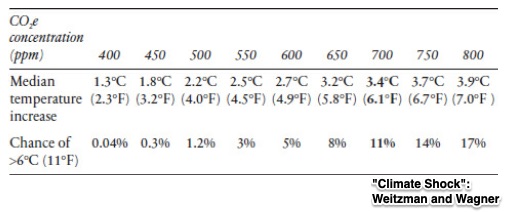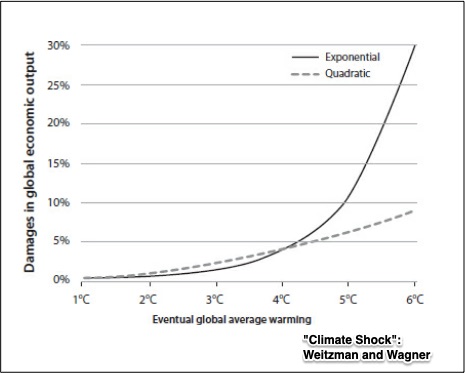When we think of global warming, we could start with a house with a hint of mold that will take more than a decade to harm us. The question is when to eliminate it. Now would cost $1,000. In 15 years, perhaps $1,500. Instead though I can invest that money and, with a 5% return, double it in 14 years. (rule of 70–divide 70 by rate of return to see when investment doubles).
Climate change presents a similar dilemma. Many of us believe that the effects of climate change won’t happen for decades so why pay now–especially if our great grandchildren will be richer and better able to afford it. After all, future suffering from global warming could be manageable. So we can wait to care for our descendants.
Not necessarily.
This is the story.
Climate Shock
The two economists who wrote Climate Shock: The Economic Consequences of a Hotter Planet, have suggested that we think of the earth as a bathtub. For millennia, the faucet “dripped” emissions that the earth’s “drain” was entirely able to absorb. But now the flow of emissions from this faucet has accelerated and the tub is filling up.
Responding, nations have taxed emissions. They create pollution caps. Economists compare cost and benefit to assess mitigation policies. Economics Nobel winner William Nordhaus hypothesized that a 3.4° C. increase from 1900 levels by the end of this century would drag global output down by 2.8%.
In Climate Shock, Gernot Wagner and Martin Weitzman recommended a different approach. They are more worried about a long fat tail that they call the “unknown unknowns.” They tell us that what we don’t know could be more dangerous than what we predict:
Just like there is a small probability that your house will burn down, low probability climate events could affect us catastrophically. In the highly unlikely event that temperatures rise by 6° C. and Greenland’s ice sheet begins to melt, we would wind up with sea levels rising by 23 feet (7 meters). Add the West Antarctic ice sheet and you get another 11 feet.
These are some probabilities:
And below, they illustrate an impact on the GDP:
Our Bottom Line: Insurance
Out of all of this, what makes sense to me is that the unknown happens. We just do not know how emissions will affect temperatures and economic growth. However, because we do experience those “black swans,” we buy insurance for our homes and our autos. So perhaps through environmental wisdom we can “insure” against the unexpected present-day and future risks that relate to rising sea levels, droughts, category 5 hurricanes, loss of ecosystems, and even Greenland melting…
And slow the faucet that is filling the earth’s emissions bathtub.
My sources and more: Always excellent, The Undercover Economist (Tim Harford) tells about the most convincing climate change article he ever read. Similarly, this Weitzman obituary and this economix column present a clear summary of Martin Weitzman’s ideas. Then, for more, you might enjoy this video from Weitzman’s co-author of Climate Shock: The Economic Consequences of A Hotter Planet. And finally, do take a look at Climate Shock. I rented a Kindle copy for $3.57. It was worth the (strange) price.









